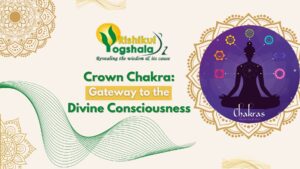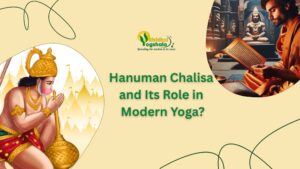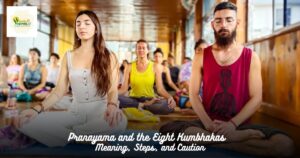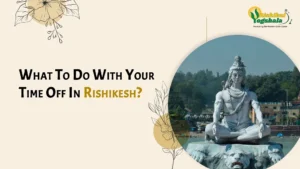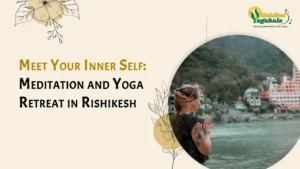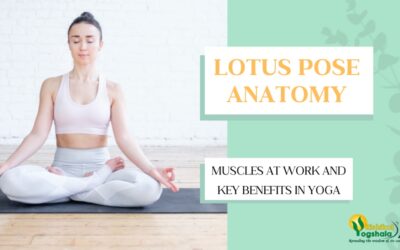In the realm of yoga, where each pose offers a unique journey of self-discovery and physical well-being, the Big-Toe Pose, or ‘Padangusthasana’ in Sanskrit, stands as a testament to balance, flexibility, and mindfulness. This pose, also known as the Hand to Big-Toe Pose, holds immense benefits for both body and mind, but its practice demands proper technique, awareness, and respect for individual limitations. Here, we delve into the depths of Padangusthasana, providing detailed step-by-step instructions, highlighting contraindications, and offering cautionary advice to ensure a safe and fulfilling practice in this blog post.
Understanding The Big-Toe Pose
The Big-Toe Pose is a forward-bending yoga asana that targets the hamstrings, calves, hips, and spine. It encourages lengthening of the spine while promoting flexibility in the legs and hips. Additionally, the gentle inversion created in this pose can help alleviate stress, calm the mind, and improve digestion. As with any yoga posture, it’s essential to approach the Big-Toe Pose mindfully, honouring your body’s limitations and respecting the journey of your practice.

Step-by-Step Instructions
- Begin in Tadasana (Mountain Pose), standing tall with feet hip-width apart and arms relaxed by your sides.
- Inhale deeply, grounding through your feet as you elongate your spine.
- Exhale, engaging your core muscles as you hinge forward from the hips, maintaining a straight spine.
- Bend your knees slightly to ease into the forward fold if necessary, ensuring your spine remains straight.
- As you fold forward, bring your hands to rest on the floor beside your feet, fingertips in line with your toes.
- Inhale, lifting your torso halfway, lengthening your spine, and creating space between each vertebra.
- Exhale, gently releasing the crown of your head toward the floor, surrendering into the forward fold.
- With each breath, allow your body to soften and release any tension held within the hamstrings and lower back.
- Once you’ve found a comfortable depth in the forward fold, engage your core and activate your quadriceps.
- Inhale deeply, then exhale as you reach for your big toes with the first two fingers and thumb of each hand.
- With a firm grip on your big toes, use your inhale to lengthen your spine once more, lifting your torso slightly.
- As you exhale, gently draw your elbows out to the sides, encouraging a deeper release into the forward fold.
- Maintain this pose for 5-10 breaths, allowing each exhalation to deepen the stretch and enhance relaxation.
- To release, inhale as you lift your torso halfway, lengthening your spine once more.
- Exhale, releasing your grip on your big toes and bringing your hands back to the floor beside your feet.
- Inhale deeply as you slowly rise back to standing, stacking each vertebra one on top of the other.
- Exhale, returning to Tadasana with a newfound sense of grounding and inner alignment.
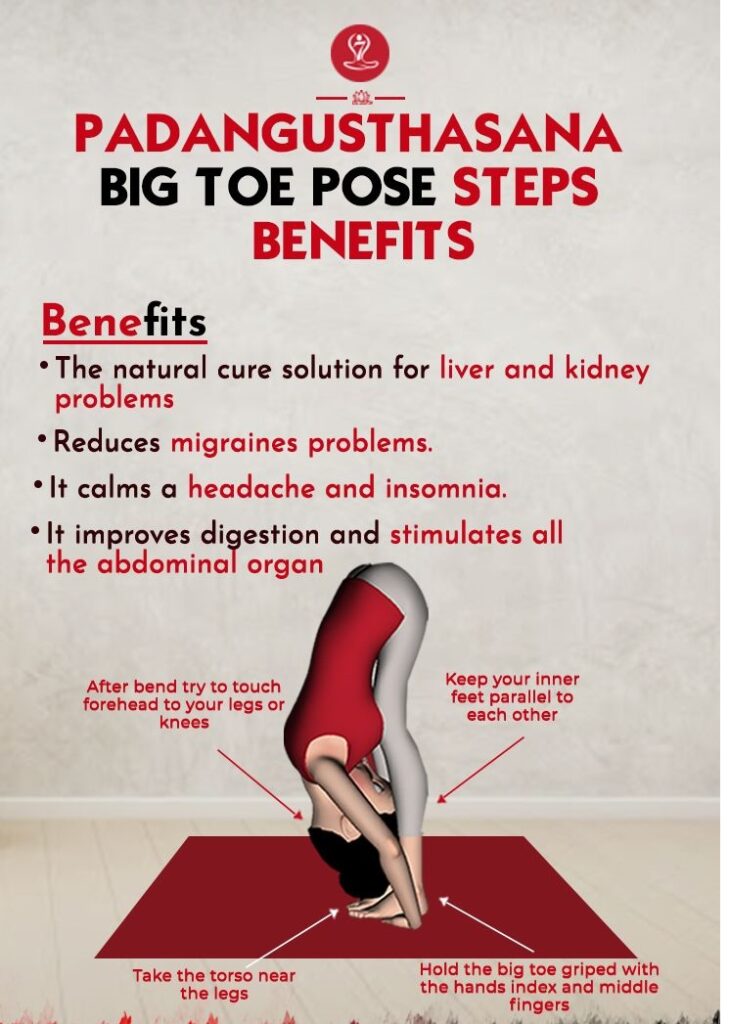
Contraindications
While the Big-Toe Pose offers a multitude of benefits, it may not be suitable for everyone. People who have any of the following ailments should proceed cautiously or not at all with this pose:
- Severe back or spinal injuries: Those with herniated discs, spinal stenosis, or other serious back issues should avoid forward folds or practice under the guidance of a qualified instructor.
- Hamstring injuries: If you have a hamstring strain or tear, refrain from deep forward folds until the injury has fully healed.
- High blood pressure: Individuals with uncontrolled hypertension should exercise caution when practising intense forward folds, as they can elevate blood pressure levels.
- Recent abdominal surgery: Those recovering from abdominal surgery should avoid intense forward bends to prevent strain on the abdominal muscles and internal organs.
Also Read: Nadi Shodhana: Meaning, Benefits, and the Process for Achieving Balance
Cautions
Even for those without specific contraindications, it’s essential to approach the Big-Toe Pose mindfully and with respect for your body’s limitations. The following general safety measures should be remembered:
- Listen to your body: Pay attention to any sensations of discomfort or pain during the pose, and ease off if you experience any strain.
- Modify as needed: If you’re unable to reach your toes comfortably, use a yoga strap looped around the balls of your feet to assist in the forward fold.
- Warm up adequately: Before attempting Padangusthasana, warm up your body with gentle stretches and movements to prepare the muscles and joints for the pose.
- Avoid force: Never force yourself deeper into the pose than your body is ready for. Progress gradually over time, honouring your body’s natural limits.
Conclusion
In summary, the Big-Toe Pose, with its graceful forward fold and emphasis on grounding and surrender, serves as a powerful tool for cultivating mindfulness, flexibility, and inner peace. By following the step-by-step instructions provided in this guide and heeding the contraindications and cautions outlined, you can start a journey of exploration and self-discovery safely and confidently. As with any yoga practice, approach Padangusthasana with patience, compassion, and a deep respect for the wisdom of your body.

With experienced teachers and a syllabus catering to practitioners of any level, Rishikul Yogshala provides individualised attention and guidance that allows students to explore with precision and mindfulness the subtleties of each asana, including the Hand to Big Toe Pose. Additionally, the Ayurveda courses enhance overall well-being and elevate the yoga journey in Rishikesh. Thus, Rishikul Yogshala is in itself an exemplary choice for all those who are eager to deepen their practice of yoga, particularly mastering the Big-Toe Pose against the serene and spiritually vibrant atmosphere of Rishikesh.
To fully learn and perfect these challenging asanas, consider joining our Yoga School in Rishikesh. We offer a range of programs, including the 200 Hour Yoga TTC in Rishikesh and the 300 Hour Yoga Teacher Training in Rishikesh. These courses provide the guidance and environment needed to advance your practice and enjoy the profound rewards of this ancient discipline.
Through personalised instruction, alignment cues, and therapeutic insights, students can deepen their practice, refine their technique, and unlock the full potential of this transformative pose. Whether initiating at a Yoga School in Rishikesh or exploring the realms of Ayurveda, Rishikul Yogshala offers a gateway to inner peace, vitality, and self-discovery, making it an invaluable resource for those seeking to enrich their yoga journey.
Last Modified Date: 01st October 2025




